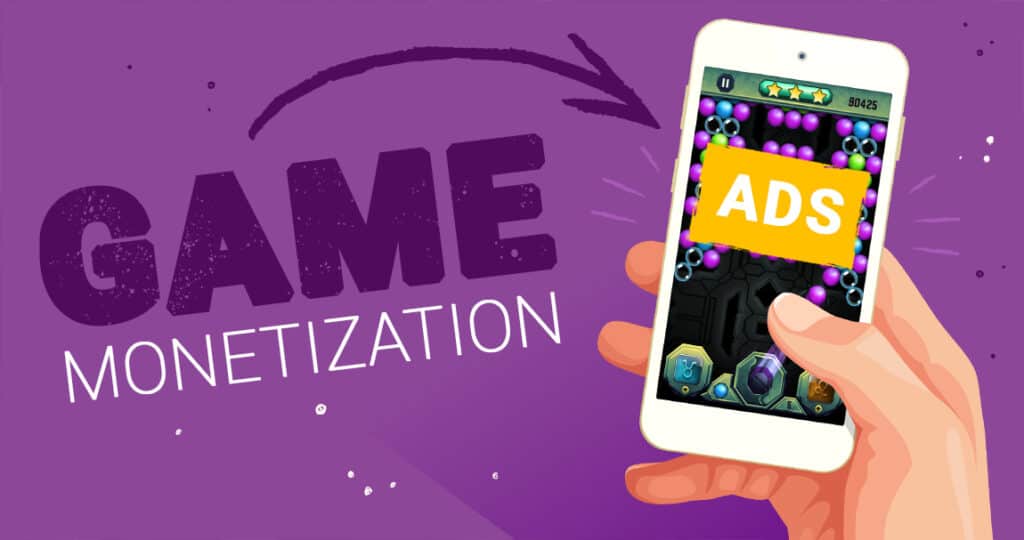Mobile gaming has become a global phenomenon, with millions of players engaging in games across various genres and platforms. As the industry grows, mobile game developers are looking for ways to monetize their games effectively. Mobile gaming monetization is crucial for generating revenue and ensuring the continued success of mobile game titles. In this article, we will explore different mobile gaming monetization strategies, emerging trends, and the factors that contribute to a successful monetization model.
Table of Contents
Understanding Mobile Gaming Monetization
Mobile gaming monetization refers to the various methods and strategies developers use to generate revenue from mobile games. With the vast number of free-to-play games in the market, developers must find creative ways to earn money without alienating players. Mobile gaming monetization models can include in-app purchases, ads, subscriptions, and more, all aimed at making the game profitable while maintaining player engagement.
The mobile gaming industry relies heavily on a free-to-play model, where the game itself is offered for free rarecareer.com, but players can make purchases within the game. This has become the standard approach for most mobile games, as it allows for a large player base, increasing the potential for monetization through additional revenue streams.
In-App Purchases: The Backbone of Mobile Gaming Monetization
In-app purchases (IAP) are one of the most popular and successful forms of mobile gaming monetization. IAP allows players to buy virtual items, upgrades, or cosmetic features within the game, enhancing their gaming experience. This method enables developers to offer their games for free while still generating significant revenue.
The key to successful in-app purchases lies in offering desirable and non-essential items that enhance the player’s enjoyment without creating a pay-to-win scenario. For example, players may purchase skins, character customization options, or exclusive content. These purchases are often small, microtransactions, but when accumulated over time, they can result in substantial revenue for developers.
Additionally, offering players the option to purchase in-game currency that can be used to unlock new content or features is another effective mobile gaming monetization strategy. This approach provides flexibility and incentivizes players to continue engaging with the game.
Mobile Gaming Monetization through Ads
Another major revenue stream in mobile gaming is through advertisements. Mobile game developers often integrate ads into their games, either through display ads, rewarded video ads, or interstitial ads. Ads are typically shown to players during natural breaks in gameplay, such as between levels or during loading screens.
Rewarded video ads are one of the most effective ad-based monetization strategies. Players are given the option to watch an advertisement in exchange for in-game rewards, such as extra lives, coins, or other valuable items. This method benefits both developers and players, as it provides a non-intrusive way to generate revenue while rewarding players for their time.
The key to successful ad monetization is ensuring that ads do not disrupt the player experience. Developers need to balance the frequency and placement of ads to avoid frustrating players while still generating revenue. Properly implemented, ads can provide a steady stream of income without detracting from the overall enjoyment of the game.
Subscriptions: A Steady Source of Revenue for Mobile Games
Subscription-based mobile gaming monetization is becoming increasingly popular, offering a more consistent and predictable revenue model for developers. With a subscription model, players pay a recurring fee to access premium content, exclusive features, or an ad-free experience.
Subscriptions can be offered in different tiers, providing players with varying levels of benefits based on their subscription package. For example, players who subscribe to a premium membership might receive special in-game items, early access to new content, or a VIP status that enhances their overall experience.
One of the most significant advantages of a subscription model is the ability to generate consistent, long-term revenue. This monetization strategy works particularly well for games that have a dedicated player base, as players who enjoy the game are often willing to pay for additional perks and content over time.
The Rise of Battle Passes in Mobile Gaming Monetization
Battle passes have gained significant traction in mobile gaming as an innovative way to engage players while generating revenue. A battle pass is a season-based reward system where players can unlock exclusive content by completing specific challenges or reaching certain milestones within a set time frame.
Players can purchase a battle pass to gain access to premium rewards, such as exclusive skins, characters, or other in-game items. There is often a free version of the battle pass as well, but the premium version provides more valuable rewards, incentivizing players to invest money to unlock exclusive content.
Battle passes work well for mobile gaming monetization because they encourage ongoing player engagement. As players work through challenges and objectives, they continue to play the game regularly, which not only generates revenue but also increases the game’s retention rate. This model provides developers with a way to keep players active while also providing a steady stream of income.
Social and Competitive Features Driving Mobile Gaming Monetization
Social and competitive features have become increasingly important in mobile gaming monetization strategies. Games that incorporate multiplayer elements, leaderboards, and social sharing features encourage players to spend more time in the game, which in turn increases the opportunities for monetization.
In many games, social elements like gifting, leaderboards, and team-based competitions encourage players to spend money on in-game purchases to gain advantages, show off their progress, or compete with others. Players are more likely to spend money on items that enhance their social standing or allow them to perform better in competitive environments.
For example, mobile games that offer multiplayer modes or allow players to compete in tournaments often include features that allow players to purchase exclusive rewards or cosmetics. This creates a sense of exclusivity and status among players, incentivizing them to invest more in their gameplay experience.
Mobile Gaming Monetization: The Importance of Retention
Effective mobile gaming monetization is closely tied to player retention. Keeping players engaged over the long term is crucial for maximizing revenue. Games that have a high retention rate are more likely to generate continuous income through in-app purchases, ads, or subscriptions.
To improve retention, developers need to create compelling gameplay experiences that encourage players to come back and keep playing. Regular content updates, limited-time events, and social features can all contribute to keeping players engaged. Additionally, a well-balanced progression system can motivate players to continue playing and investing in the game.
Mobile gaming monetization strategies should be designed with player experience in mind. Developers who focus on creating a fun and rewarding experience for players are more likely to see long-term success in their monetization efforts.
Conclusion
Mobile gaming monetization is an essential aspect of the industry’s growth, allowing developers to turn their games into profitable ventures while providing players with enjoyable experiences. By using a combination of in-app purchases, ads, subscriptions, and battle passes, developers can generate steady revenue while keeping players engaged. As the mobile gaming landscape continues to evolve, new monetization strategies will likely emerge, but the core principles of offering value to players and balancing revenue generation with player satisfaction will remain key to success. With the right approach to mobile gaming monetization, developers can build sustainable, profitable games that stand the test of time.




